📌 Tools of Resistance: Vigils
Creating a powerful, peaceful presence that honors victims, raises awareness, and fosters solidarity
Welcome to How to Resist, a newsletter that shares acts of nonviolent resistance, mutual aid, and community building for ordinary folks.
I hope this newsletter inspires new ideas and helps you discover ways to engage that are right for you. If you like this content, act on it! Find something that speaks to you and take those first steps confidently, knowing you are part of a rising tide.
In the words of Margaret Mead, “Never doubt that a small group of thoughtful, committed, citizens can change the world. Indeed, it is the only thing that ever has.”
What are Vigils?
In its simplest form, a vigil is one or more people remaining in a particular place in order to express a viewpoint. Vigils are often presented as somber events, with participants remaining silent, holding candles, or adopting a style of clothing (for example, black garb). They can be short-term events or sustained for long periods, with rotating participants.1
Vigils aim to raise awareness, demand justice, promote solidarity, influence policy, and bring about change.
Planning a vigil
Legal considerations: Holding a vigil is not, in and of itself, illegal. However, it may be unlawful in your area to block traffic, trespass, lack local permits, violate curfew, or engage in disorderly conduct.
✔️ As always, make sure you fully understand your rights and potential legal consequences before engaging in nonviolent actions.
Find a group or form your own: Activism is often more effective when done in groups, and it’s much easier to add to existing efforts than start from scratch. See if there is an organization or group of people already involved in this work, such as Women in Black or Lights for Liberty.2 Tap into local activist groups, such as Indivisible, or faith organizations. If you can’t find a group in your area, grab some friends and make your own!
Think about your goals: Are you aiming for visibility and awareness, influencing public opinion, changing social norms, empowerment, solidarity, or policy change? How can you tie this tactic into a broader strategy for your cause?
Set clear messaging: Aim for a clear, resonant message. Simplicity and sincerity in the imagery, symbols, and slogans help communicate the cause effectively and set the tone of the event. Candles or mobile phone flashlights can create the right atmosphere. Consider inviting those who have been directly impacted to speak, or have a silent event.
Strategic location: Choose a site that amplifies the message and puts pressure on those responsible, such as government buildings or symbolic locations such as detention centers, courts, or universities where students have been detained. Determine if permits will be required.
Timing and duration: Time the vigil to coincide with poignant dates or critical moments. Long-term vigils can build momentum and keep the issue in public view, while short-term vigils can be effective in responding to breaking events.
Estimate cost and material support: Think about your ability to provide candles, signs, banners, water, or snacks for participants. Is there a permit fee?
Marketing: Advertise your event widely on social media and use existing infrastructure (bulletin boards, message groups, online forums, word of mouth) to get the word out in your area.
Sustaining participation and motivation: Plan for participants' needs and sustained motivation. Provide basic comforts, rotate shifts, and foster a sense of community and solidarity to keep the vigil going.
Prepare yourself and your participants: You may want to provide guidance on what to wear and bring, and how to respond to media and law enforcement. Organize support roles, if needed.
Document and share: Take photos and video of the event and share widely to maximize visibility and impact. Invite local media.
Evaluate and adapt: Reflect on the event, the successes, challenges, lessons learned, and opportunities. How would you do this differently next time? Share your experience with others.
Examples
Vigils for the Detained
In 2019, the organization Lights for Liberty organized a nationwide Vigil to End Human Detention Camps in response to the deplorable conditions of immigrants held in US custody under the first Trump administration.3
Also in 2019, members of the South Georgia Immigrant Support Network (SGISN) gathered at the Irwin County Detention Center on the evening of Martin Luther King Jr. Day to hold a vigil for those who died and those currently detained at detention centers across the country.4
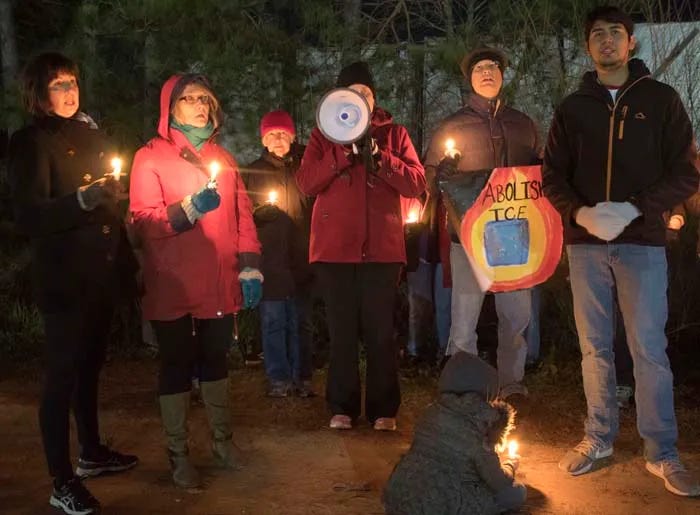
Prayer Vigils
In 2022, Pilgrimage for a Better Future, a coalition of faith leaders and community activists, held a prayer vigil outside the Imperial Regional Detention Facility in Calexico, California. The vigil was part of an organized ‘pilgrimage’ of California detention centers, where participants demanded closure of all state detention centers.5
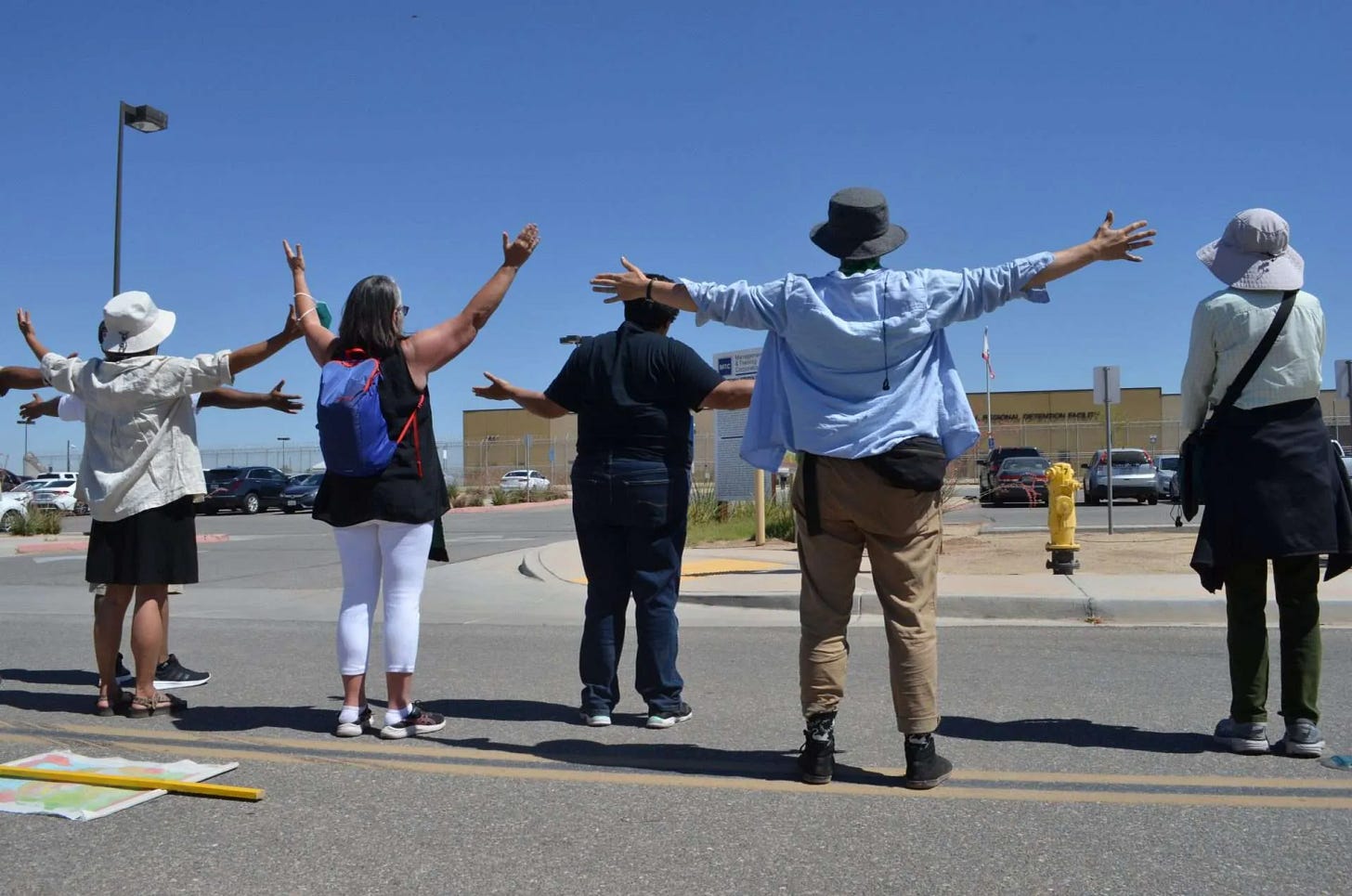
Vigils Against War
In the aftermath of the Sept 11th attacks on the United States, the anti-war group Women in Black organized a vigil in New York City. Participants held hands and stood motionless and silent for an hour at each event. 6
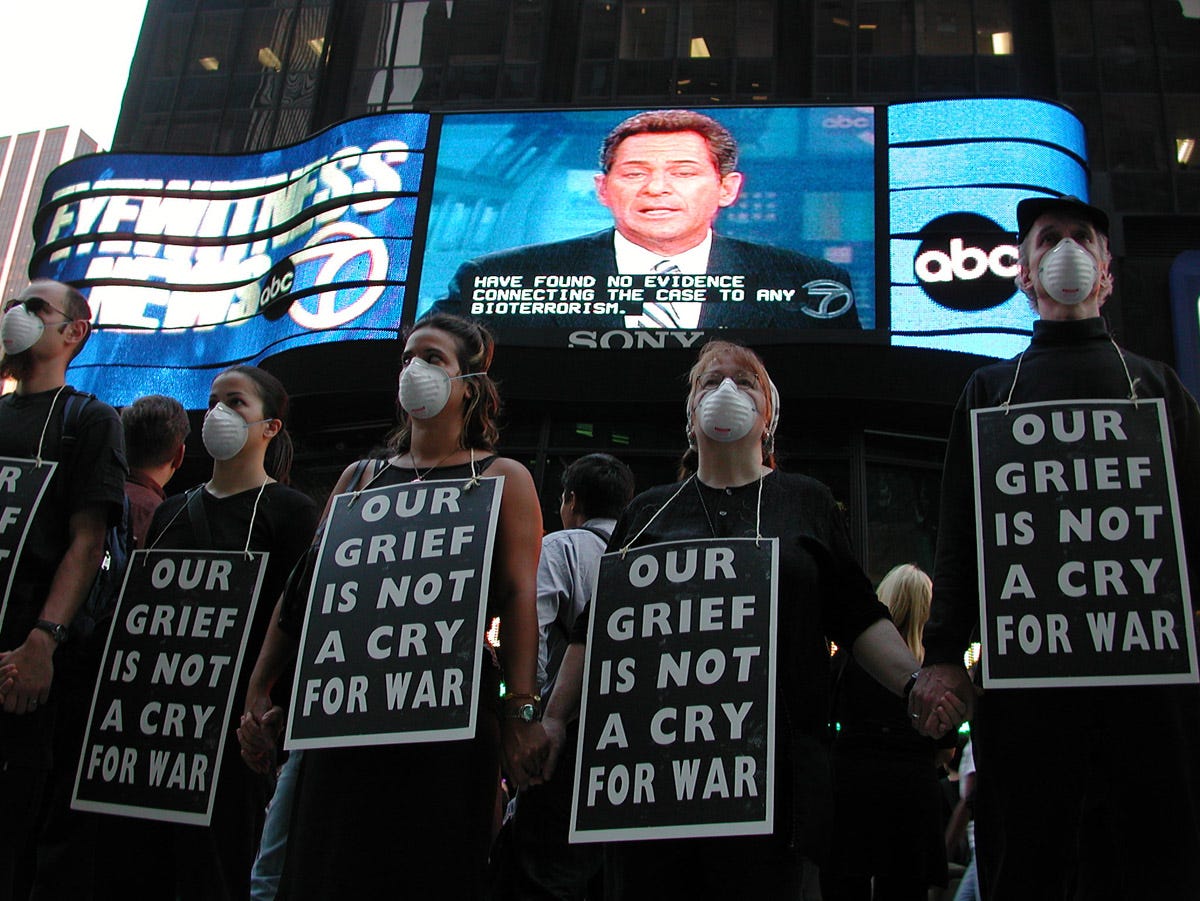
Vigils for Democracy
In the aftermath of the 2018 Russia-United States Summit in Helsinki, in which President Trump sided with Putin over the FBI regarding allegations of election interference in the 2016 election, nearly 200 cities across America held public vigils for democracy to “confront corruption and demand democracy.”7
Vigils for the missing and murdered
Every year on October 4th, Sisters in Spirit Vigil “honour the lives and raise awareness of the violence experienced by Indigenous women, girls, two spirited in Canada.”8
The Monday Demonstrations - Leipzig, 1989
In the autumn of 1989, peaceful candlelight vigils in Leipzig, East Germany, played a crucial role in the fall of the communist regime. For years, opposition activists gathered at St. Nicholas Church to pray for peace and freedom. By September 1989, these meetings turned into large protest vigils, growing from hundreds to tens of thousands of participants by October.
On October 9, 1989, despite the authorities' preparations to crush the demonstrations with force, around 70,000 citizens marched peacefully, holding candles and chanting "No violence!" and "We are the people!" The authorities, faced with this nonviolent moral force, refrained from attacking. This pivotal moment broke the spell of fear, leading to larger protests and ultimately the opening of the Berlin Wall on November 9, 1989. The Leipzig vigils were a key factor in the collapse of East Germany's communist government and the reunification of Germany, showcasing the power of nonviolent action.9 10 11 12
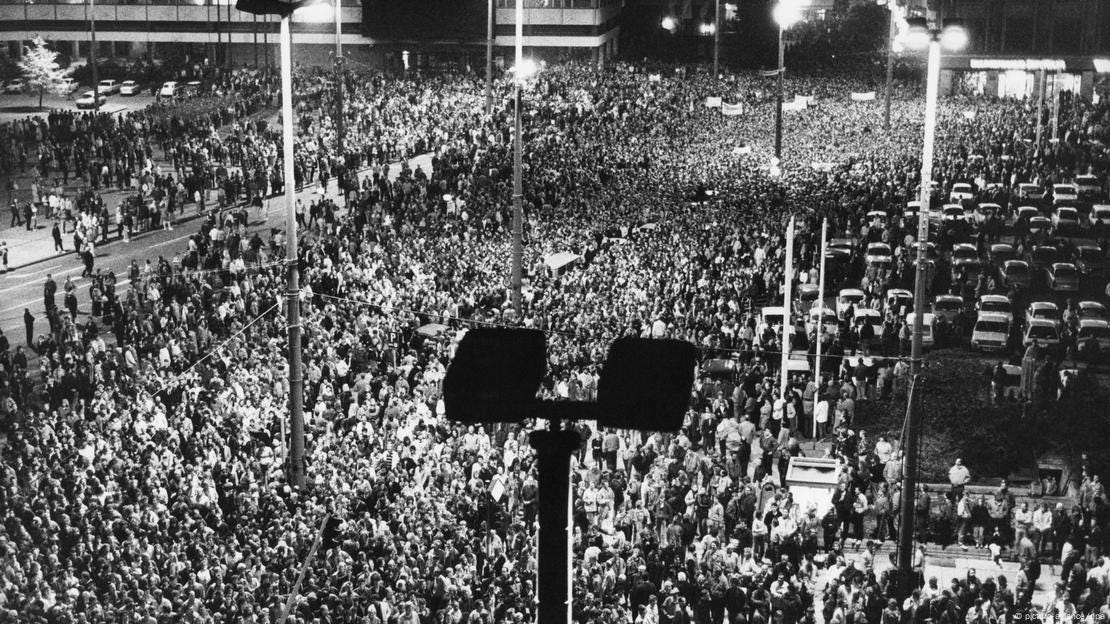
Mothers of the Disappeared (Madres de Plaza de Mayo) - Buenos Aires, 1977
From 1976 to 1983, Argentina's military junta orchestrated the disappearance of over 30,000 dissidents, who were taken without arrest or due process, and either imprisoned or murdered. On April 30, 1977, 14 mothers of 'the disappeared' began a silent march in the Plaza de Mayo, directly in front of the Presidential Palace, pleading for the return of their children. The vigil grew, and by the end of that year, hundreds of mothers, wearing white headscarves embroidered with their children's names, joined the march.
Now, nearly fifty years later, the mothers still march every Thursday at 3:30. They gather at Plaza de Mayo in their white headscarves, some now in wheelchairs, steadfastly demanding answers about their children's fate.13 14 15
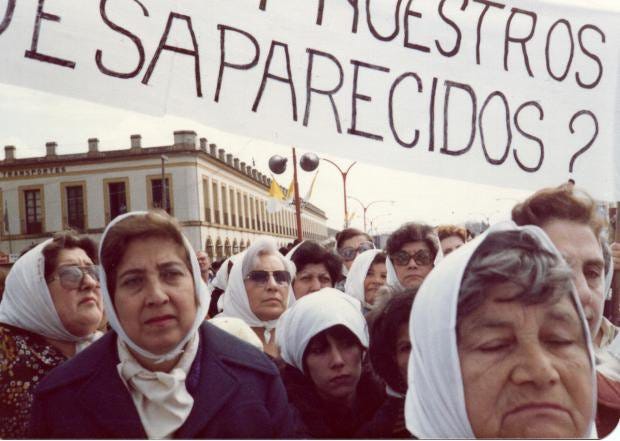
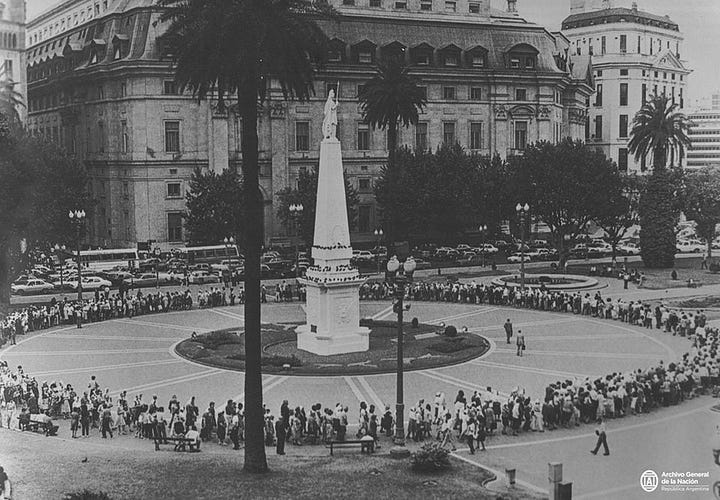
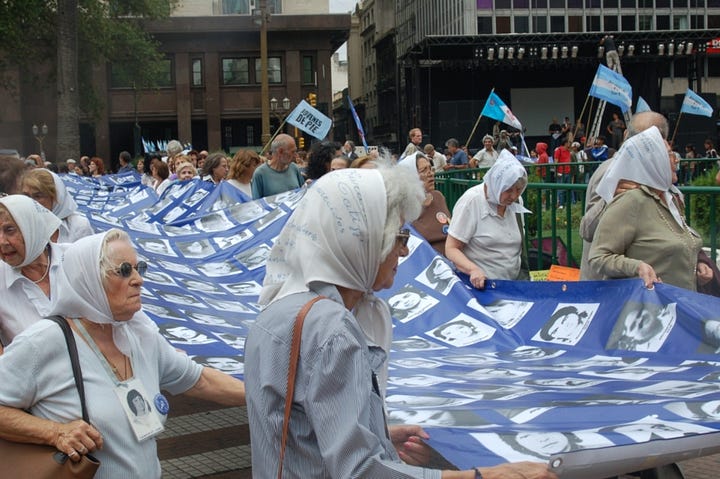
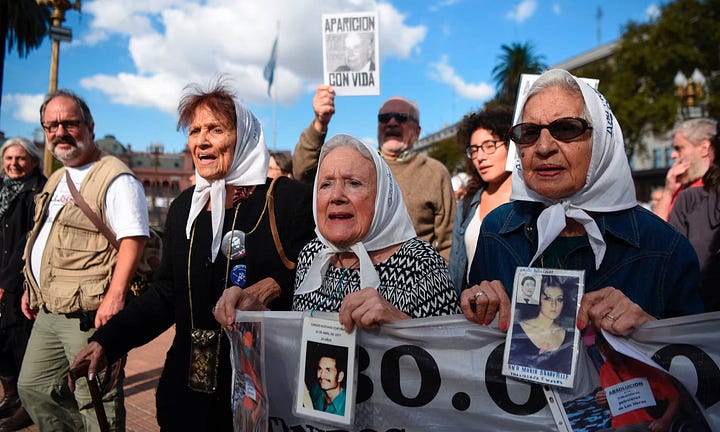
Have an example or experience to share?
Drop it in the comments! We love to see ideas in action!
Support How to Resist
As a librarian, I am committed to keeping How to Resist free to read and publicly available.
If you believe in the power of community-driven, nonviolent resistance and find the information here valuable, please consider upgrading to a paid subscription. Your support will help cover the labor and costs involved in researching, writing, and producing this newsletter and enable me to continue writing in the service of democracy, both here and abroad.
You can also make a one-time donation here: ko-fi.com/howtoresist
Sharp, G. (1980). Politics of nonviolent action: Methods of nonviolent struggle pt. 2. Sargent (Porter), Publisher.
This organization appears to be no longer active, but it also seems to have some existing infrastructure that could potentially be revived.
Reneau, A. (2019, June 24). Thousands of people are organizing a huge, nationwide vigil at detention camps across America. Upworthy. https://www.upworthy.com/thousands-of-people-are-organizing-a-huge-nationwide-vigil-at-detention-camps-across-america
Malone, W. (2019, January 26). Candlelight vigil held in support of detained immigrants. Tifton Gazette. http://tiftongazette.com/2019/01/26/candlelight-vigil-held-in-support-of-detained-immigrants/
Morales, J. (2022, June 1). Prayer Vigil Calls for Calexico Detention Center’s ‘Just Closure.’ Calexico Chronicle. https://calexicochronicle.com/2022/05/31/prayer-vigil-calls-for-detention-centers-just-closure/
California. (n.d.). Retrieved April 16, 2025, from https://womeninblack.org/vigils-arround-the-world/america/united-states-of-america/california/
Nearly 200 Vigils to Confront Corruption and Demand Democracy. (n.d.). People For. Retrieved April 16, 2025, from https://www.peoplefor.org/blog-posts/nearly-200-vigils-to-confront-corruption-and-demand-democracy
Brennan, N. (2024, October 4). ‘No progress made’: Vigils mark annual push seeking justice for missing, murdered Indigenous women and girls. Calgary Herald. https://calgaryherald.com/news/vigils-action-justice-missing-murdered-indigenous-women-girls
Peter, L. (2019, October 13). East Germany 1989 - the march that KO’d communism. BBC News. https://www.bbc.com/news/world-europe-50003305
Bierbach, M. (2019, October 8). The peaceful protest that brought down East Germany. Deutsche Welle. https://www.dw.com/en/how-east-germans-peacefully-brought-the-gdr-regime-down/a-50743302
Curry, A. (2009, October 9). “We Are the People”: A Peaceful Revolution in Leipzig. DER SPIEGEL. https://www.spiegel.de/international/germany/we-are-the-people-a-peaceful-revolution-in-leipzig-a-654137.html
Vigils. (2025, March 16). Museum of Protest. https://museumofprotest.org/methods/vigils/
Goñi, U. (2017, April 28). 40 years later, the mothers of Argentina’s “disappeared” refuse to be silent. The Guardian. https://www.theguardian.com/world/2017/apr/28/mothers-plaza-de-mayo-argentina-anniversary
The Mothers of the Disappeared: Challenging the Junta in Argentina (1977-1983). (2018, September 18). ICNC. https://www.nonviolent-conflict.org/mothers-disappeared-challenging-junta-argentina-1977-1983/
The Mothers of Plaza de Mayo: “We were born on the march.” (n.d.). openDemocracy. Retrieved April 20, 2025, from https://www.opendemocracy.net/en/mothers-plaza-de-mayo/





Activists host vigil at shuttered Dublin, CA prison being eyed as ICE facility
https://www.danvillesanramon.com/dublin/2025/04/21/activists-host-vigil-at-shuttered-dublin-prison-being-eyed-as-ice-facility/